The sundial “making-of” story. By Roser Raluy
Roser Raluy
The sundial with the medieval "Creation tapestry".
The history of manufacturing.
I like “auques”, a traditional art in Catalonia. Aleks saw one of them that I had dedicated to my uncle and thought a good idea will be to make a sundial in this form for the new house a good client of him had just bought in Mallorca. I thought that better that an “auca” we could base the design on the great medieval embroidery called The Tapestry of Creation that is in the Treasure of Girona’s Cathedral. In that embroidery of huge dimensions, it is described the Pantocrator, the first chapters of how the world was created, the months of the year, the winds and the rivers from paradise; as well as the history of the Holy Cross founding. We bought a large copy of the Tapestry of Creation and went to Mallorca to show Dmitry Barchenkov. He not only liked very much, but he asked to be done exactly as it was the original, and in the same size!!!
We had a year ahead. The work of Aleks at the time was to digitise the image of the Tapestry, and to design the band around that had to include the numbers of the hours, following the decorative elements that existed in the original design. Almost all sundials include a motto with a relevant sentence. In this case, Aleks had chosen the words of Ramon Llull, a medieval philosopher from Mallorca. It was the 164th verse of the book The Book of the Lover and the beloved “The beloved asked the lover what love was. He replied it was the presence of the ways and words of the beloved in the longing heart of the lover, and sorrow through desires and tears in the lover's heart”. But, in which language should we do it? Ramon Llull wrote in 13th century Catalan. It was decided the words will be in four languages: Catalan, Spanish, Latin and Russian. To get the right translations I asked the help of Albert Soler from Barcelona’s University. Aleks had already done all the calculations for the wall’s declination where the sundial was to be set, as well as the position of the gnomon that with its shadow will show the solar time. Tests of verification were done in a large scale banner. Everything was OK, we could start.
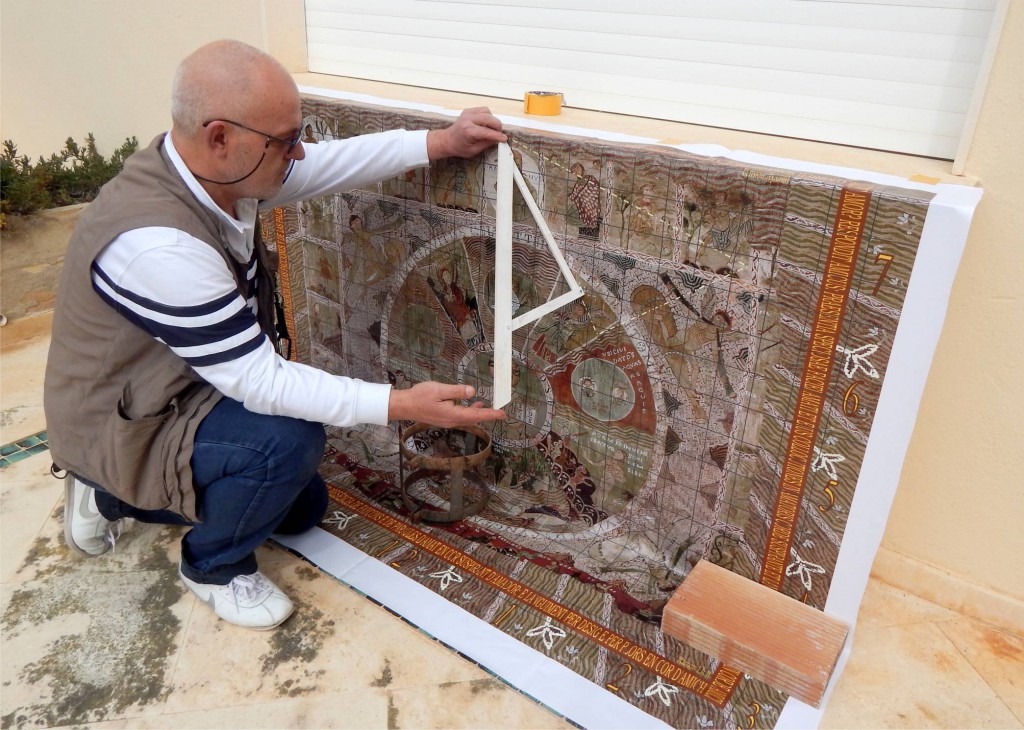
Fig.1. Checking the model of the sundial.
I had the completed design in a large scale colour print. I also had the drawing of every single tile in full size black and white to be used to do the transfer, and in colour to do the painting. There were 414 unfired white slip coated tiles of 20 x 20cms. I had also the book about the Tapestry of Creation from the Girona’s cathedral that proved very helpful in order to decipher certain images and lettering that due to time were not so clear from the Tapestry. The last large restoration had brought highlights to certain areas unknown until now.
The traditional way to transfer an image to a ceramic tile is through the perforation of small dots along the lines of the design, applying afterwards carbon powder over it to let the drawing “pass” to the other side. Then all the design has to be redrawn with a pencil.
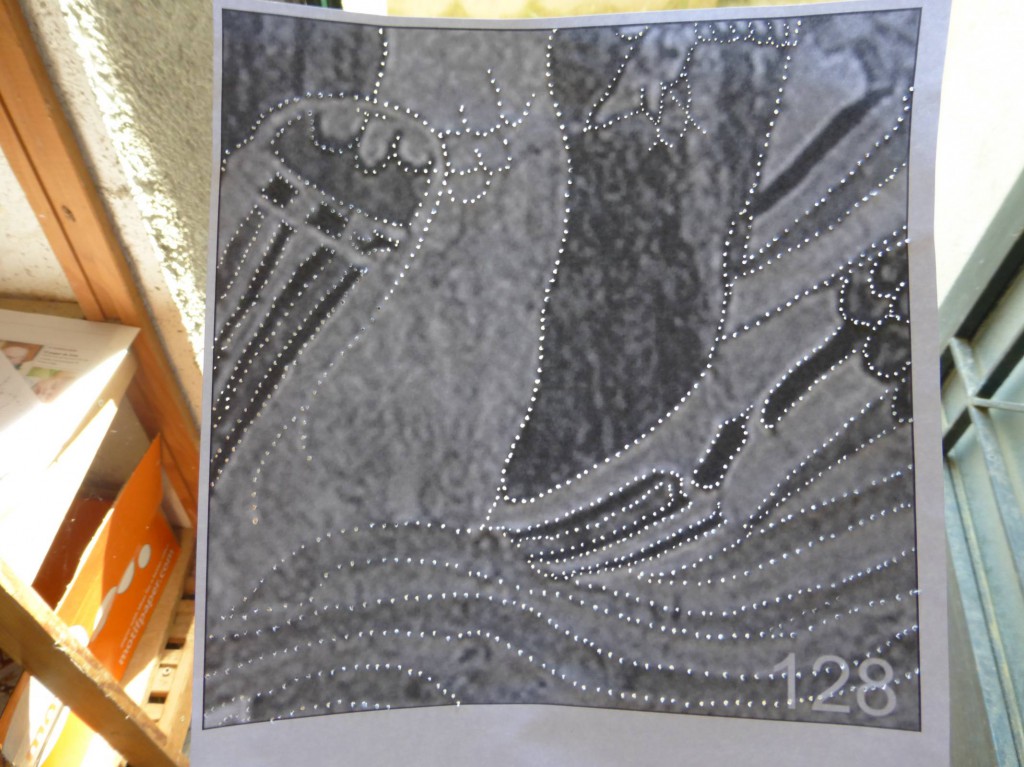
Fig. 2. The traditional method of transferring images to a ceramic tile.
This system is rather slow, and Aleks proposed to use carbon paper. I was against it and I kept drilling until he came in August. He spent a long time into the “cave” as he calls my workshop, but using the carbon paper he finished drawing the 300 tiles left.
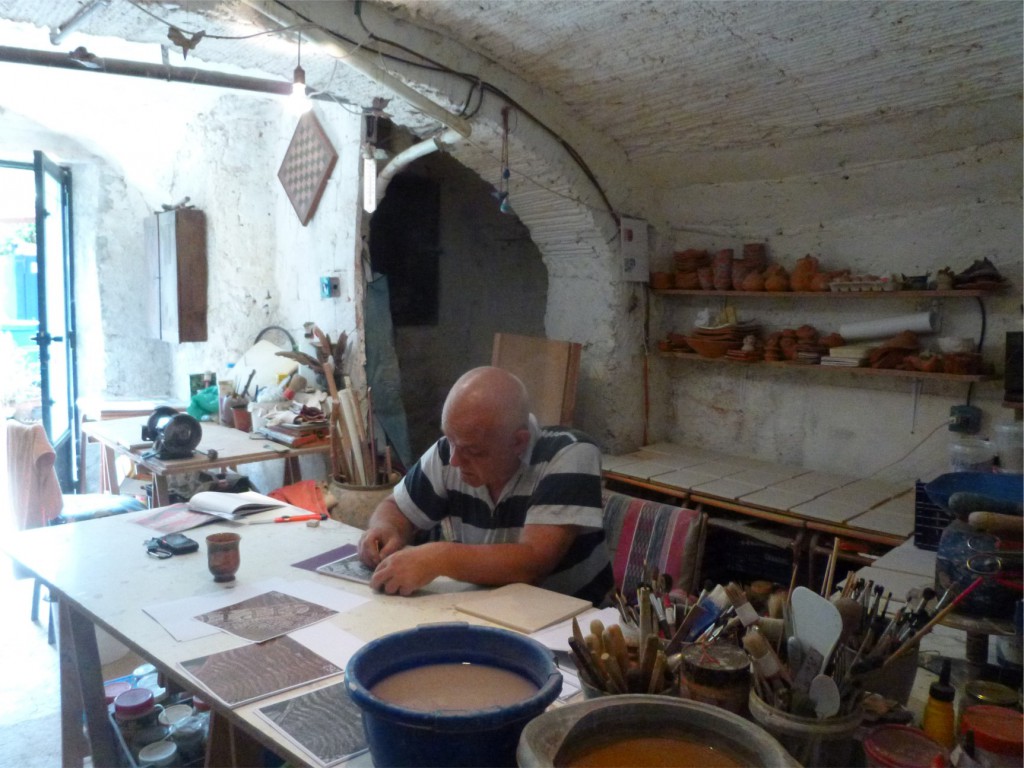
Fig. 3. Aleks chained to the wall of the cave tries to help Roser Raluy.
I had prepared 20 colored slips in total, to be able to get closer to the original colors. The colored slips were applied over unfired earthenware tiles that had been coated with a white slip. In Ferres Ceramic Factory were to glaze and fire the decorated tiles in their big tunnel kiln.
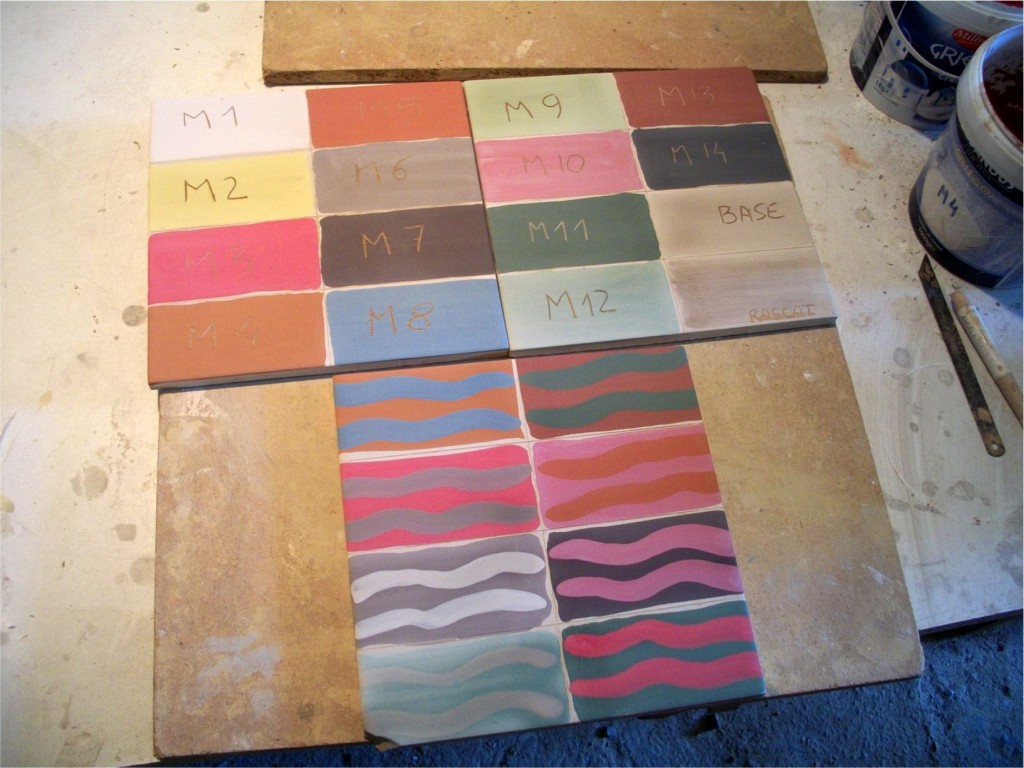
Fig. 4. The palette of 24 colors.
As I had to paint the tiles in sets of 3 rows of 23 tiles each time, I took them, once they were biscuit fired, in lots of about 100 tiles to the factory. The workshop had been transformed with tables and boards to be able to paint at the same time as many tiles were possible to guarantee the coincidence of the design...
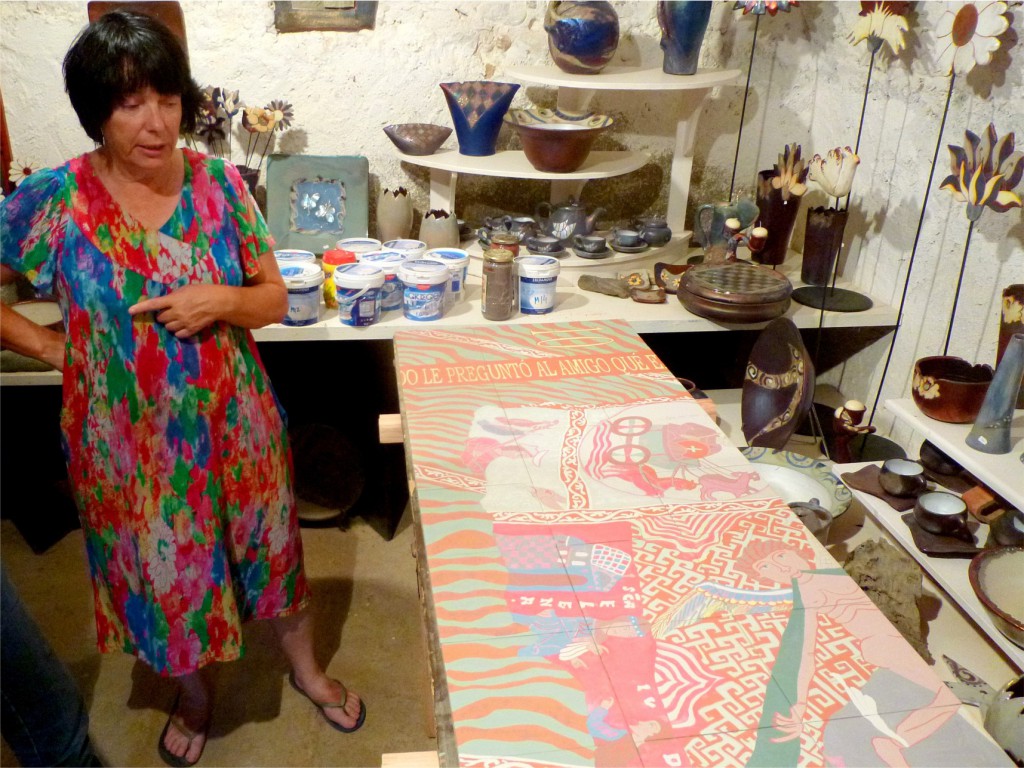
Fig. 5. I had to paint three rows of tiles simultaneously.
As I was painting the tiles, the more I liked the Tapestry. I was recognizing in certain details, some of the problems that the people embroidering it must have had. Who has done that major work is not clear, but there are good reasons to think that the nuns from Sant Daniel monastery in Girona did it. I was smiling in sympathy and talking to the 11th century people that were trying to draw a whale that had never seen or to show us the life birth of Eve.
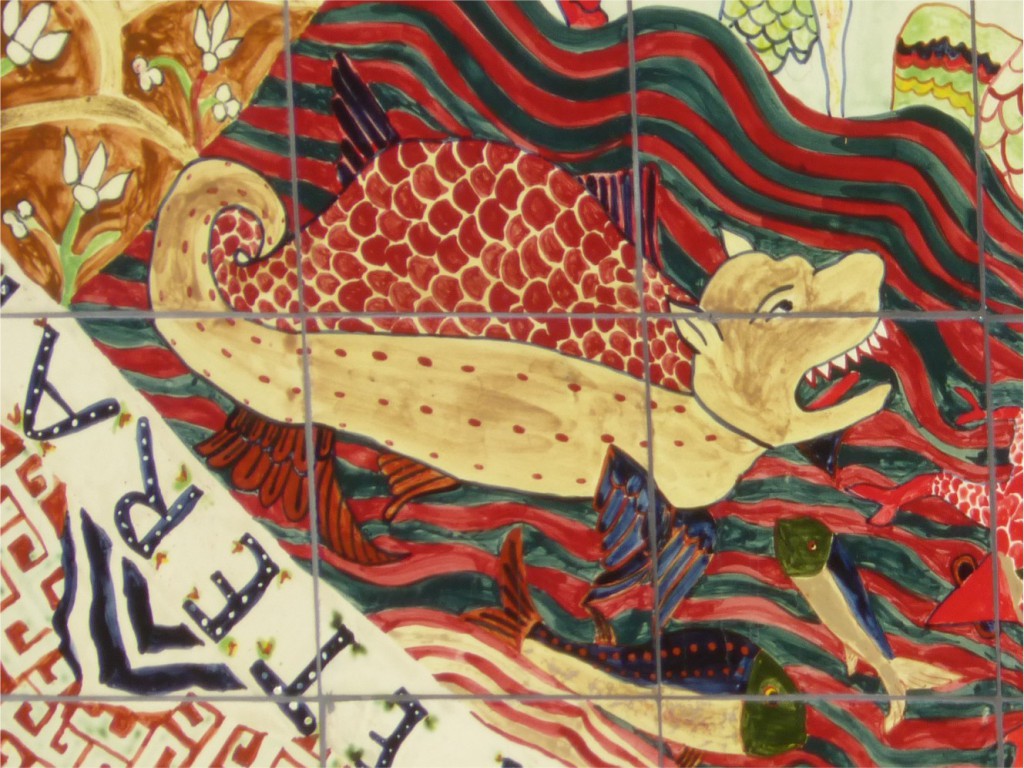
Fig. 6. In the 11th century, this unknown animal was thought to be a whale.
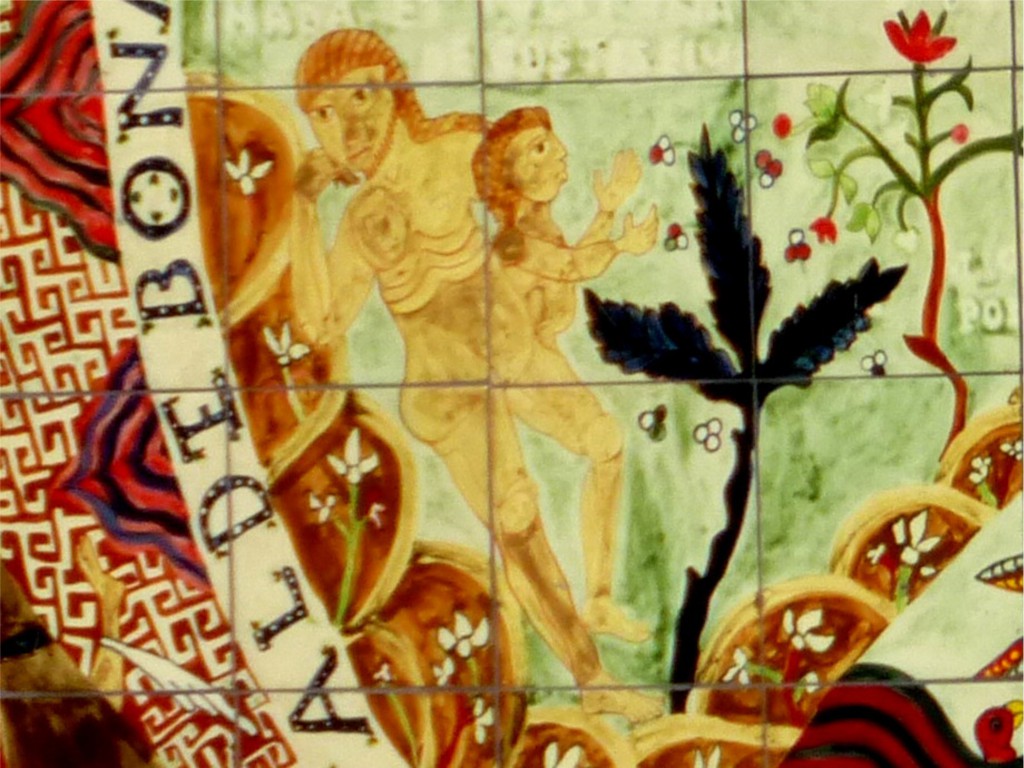
Fig. 7.Eve is born from Adam's rib, while Adam looks meditatively to the side.
That tapestry was meant to show as well to medieval people the latest technology acquired, like the latest hit in ploughs or the new behavior of feeding the horses in spring to prepare them for war. Sometime later, I also discovered why Mr Barchenkov had liked the design so much. The iconography is based mostly on the classical world and Byzantium heritage. He is very devoted to the Russian Orthodox Church, and the symbology used in it was shared among all the Christian churches before.
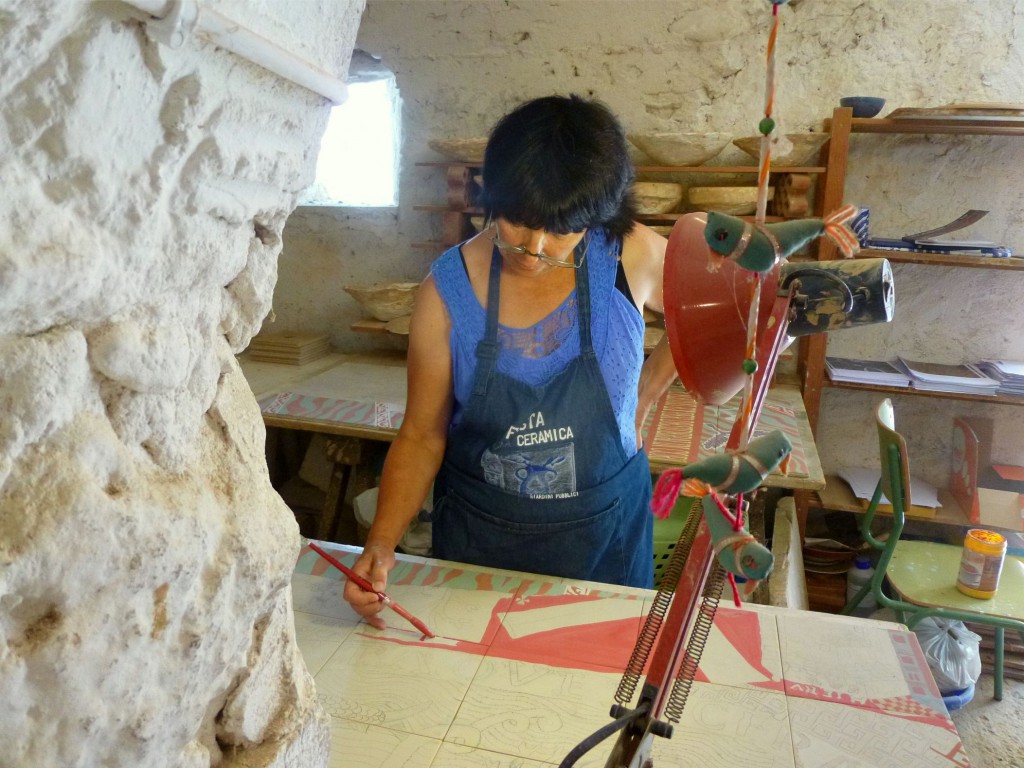
Fig. 8. I paint the legend of the True Cross.
During the firings some tiles were broken. Those that had to be repeated were complicated to do, as all the tiles around should be taken again to guarantee the continuity of design. In fact there were certain tiles that had a very stubborn behavior, for example number 111 had to be repeated 4 times!!!
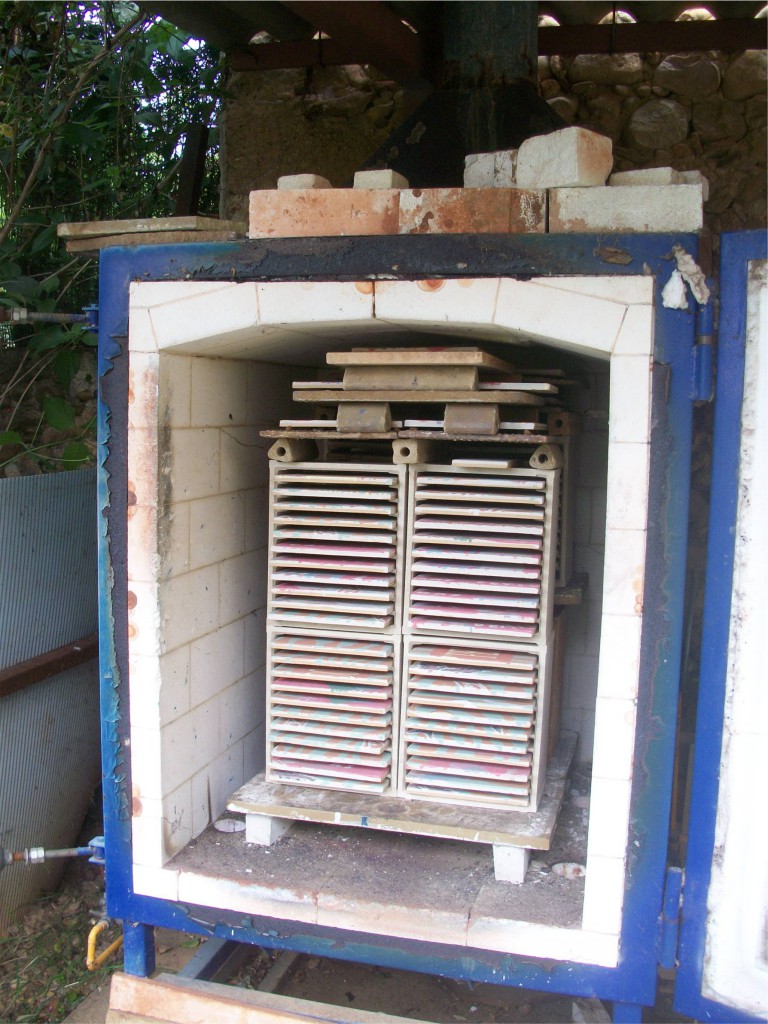
Fig. 9. The tiles are ready for the first biscuit firing.
Three new tiles were introduced to the original design. Number 1 tile with the Barchenkov’s family portrait. Number 414 with the signature of the authors: “This sundial of the Tapestry of Creation, surrounded by the wisdom of Ramon Llull, has been created in MMXIV by Aleksandr Boldyrev and Roser Raluy”. The tile number 23 has been dedicated to the memory of Dmitry Barchenkov’s mother that had passed away at the time the sundial was almost finished: “This sundial is dedicated to my beloved mother Galina Petrovna Kulikova 26-02-1947/ 05-12-2014.
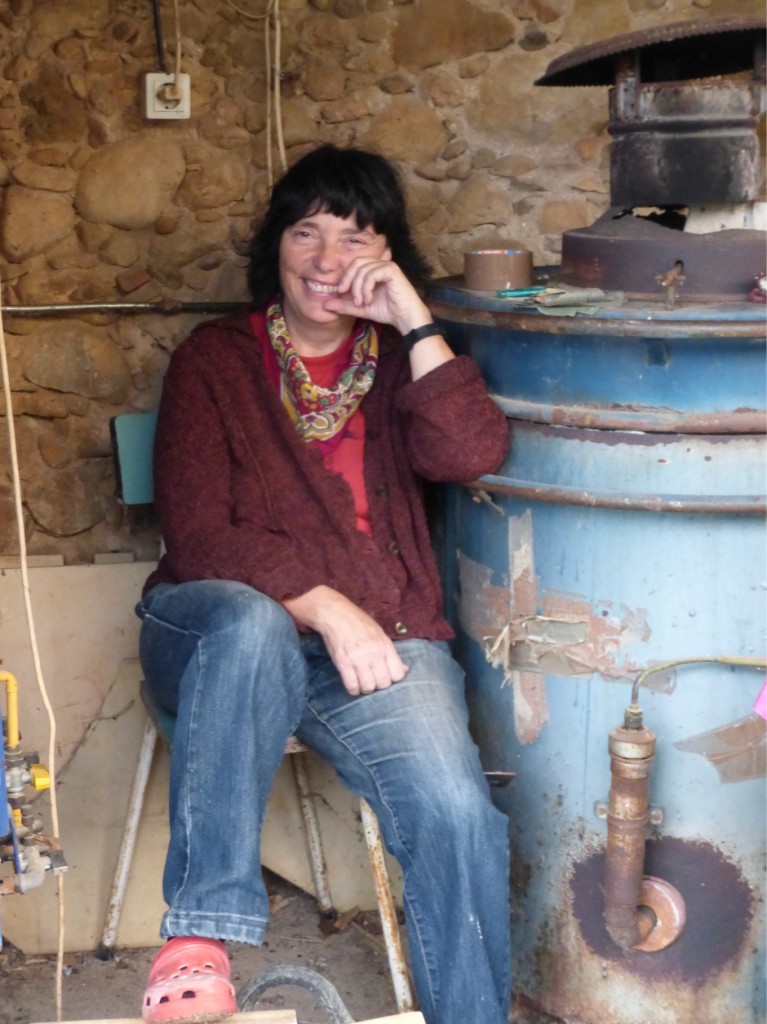
Fig. 10. The first biscuit firing is going on properly. Everything is under control.
With all the tiles already done, numbered and orderly placed in 22 boxes, we went to Mallorca the 26th of December 2014. The whole sundial was displayed on the floor of the house’s garage, waiting to be installed. One doubt had disturbed me: “Will the wall be big enough? The sundial was so large that I was hoping that no error had happened and that it would be enough space on the wall for it.
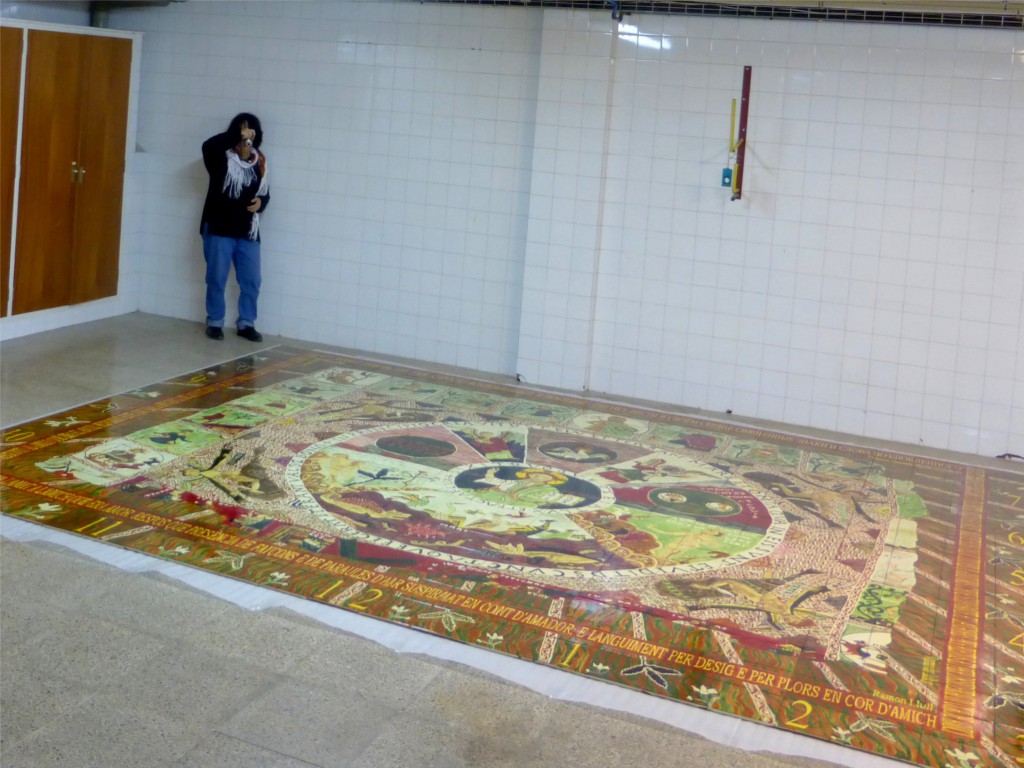
Fig. 11. The sundial is very large. Is the wall large enough?
On February a team of workers started to fix the tiles on the wall. Aleks was to take to Mallorca the stainless steel gnomon made in Moscow; I had to take the ceramic frame pieces. Once again when asked in the airport what were we carrying, the explanation that it was for a sundial seemed so bizarre that we had the” OK, get through” without problems.
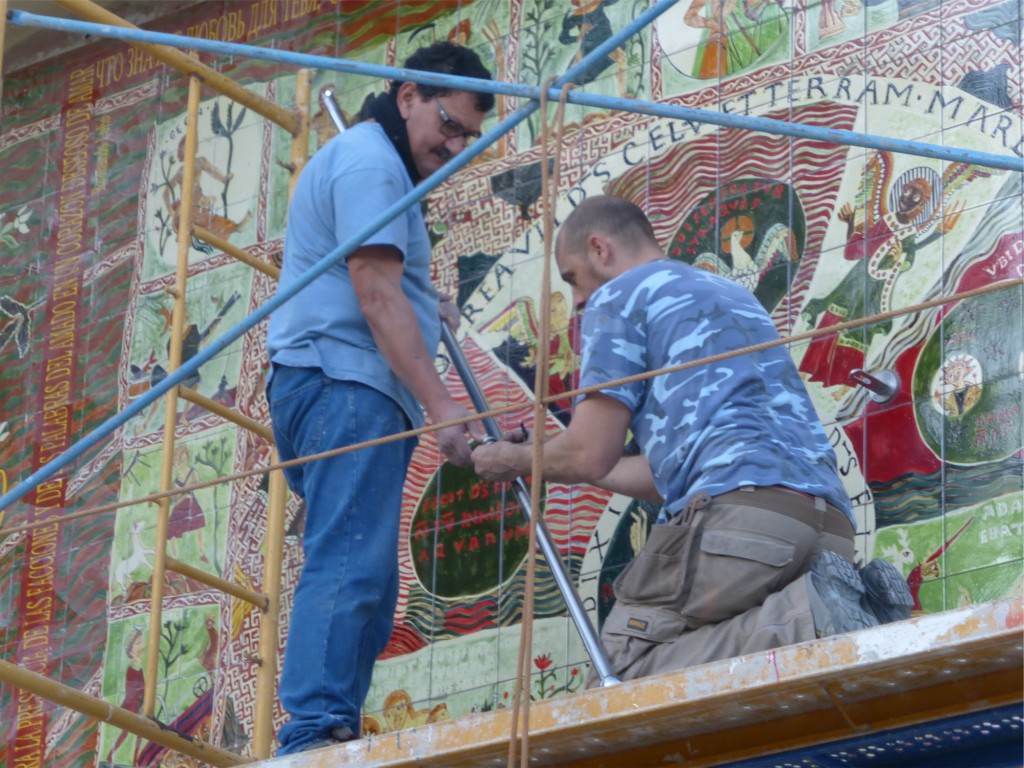
Fig. 12. Martin and Victor assemble the gnomon.
Martin and Victor from all4houses had all the tiles set on the wall when we arrived. I saw with relief that the wall was big enough, though not much place was left. Holes through the wall to fix the gnomon were made; luckily the marble at the other side was not damaged. The ceramic frame was set up and the gnomon securely fixed.
Happily the 3rd of March 2015 the sun shone to give us the time of the Tapestry of Creation Sundial.
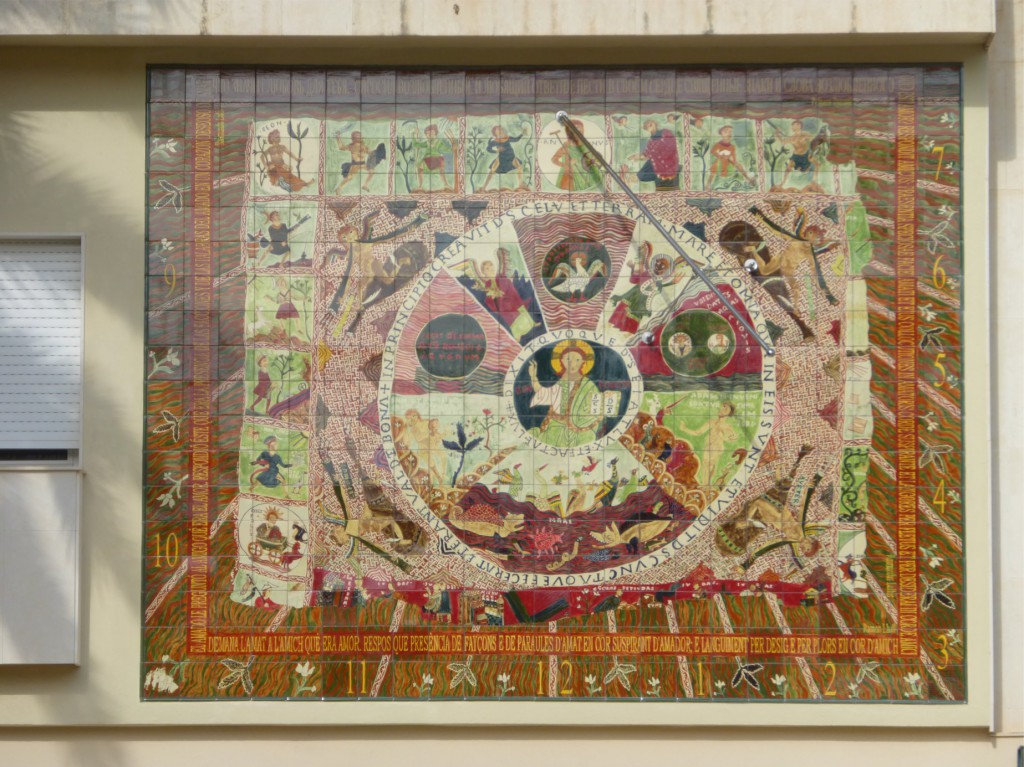
Fig. 13. Here's what we have as a result.
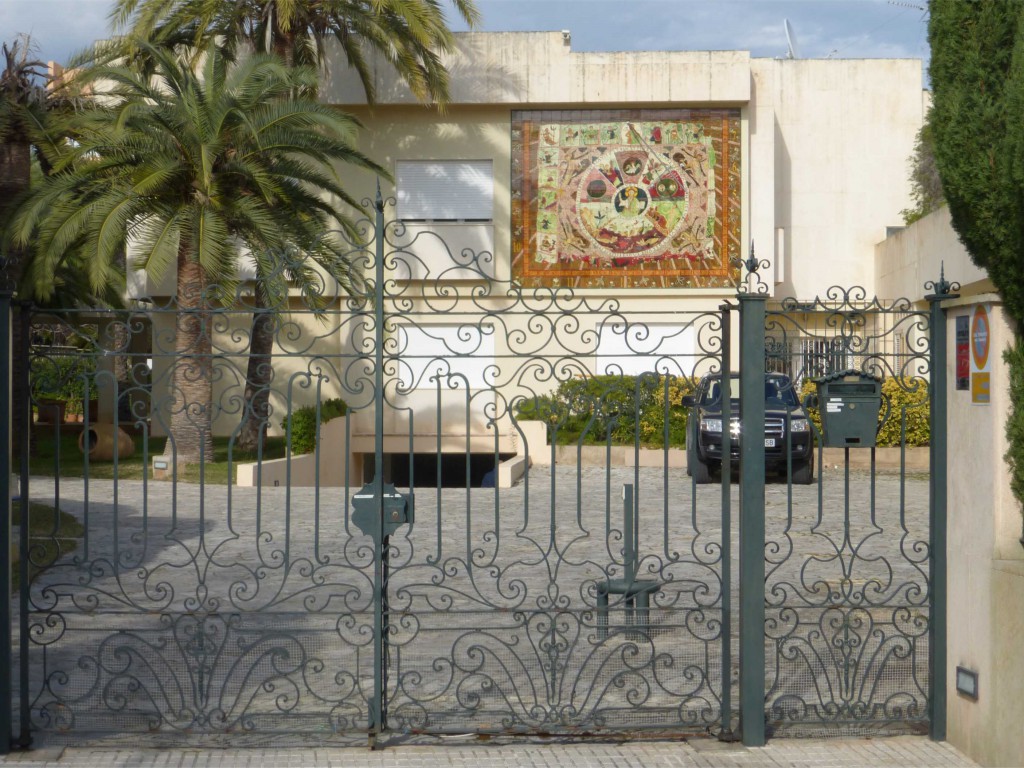
Fig. 14. Here's what we have as a result.
Thank you very much to all that had made it possible.
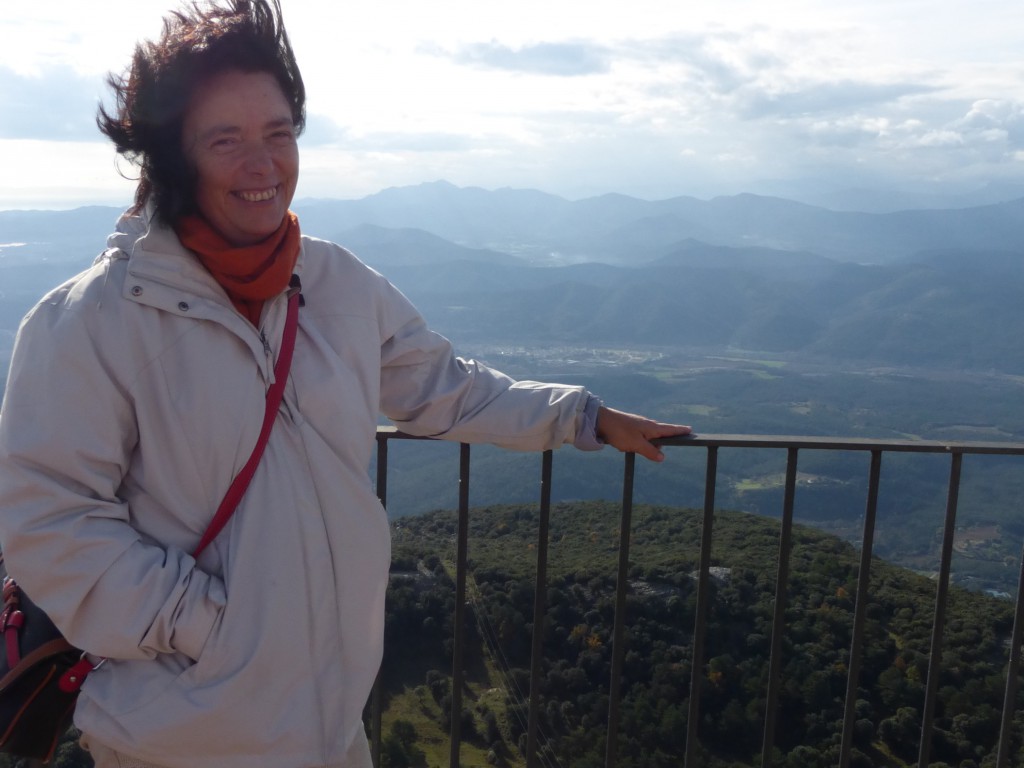
Fig. 15. Thank you very much to all that had made it possible. Roser Raluy against the background of Catalonia.
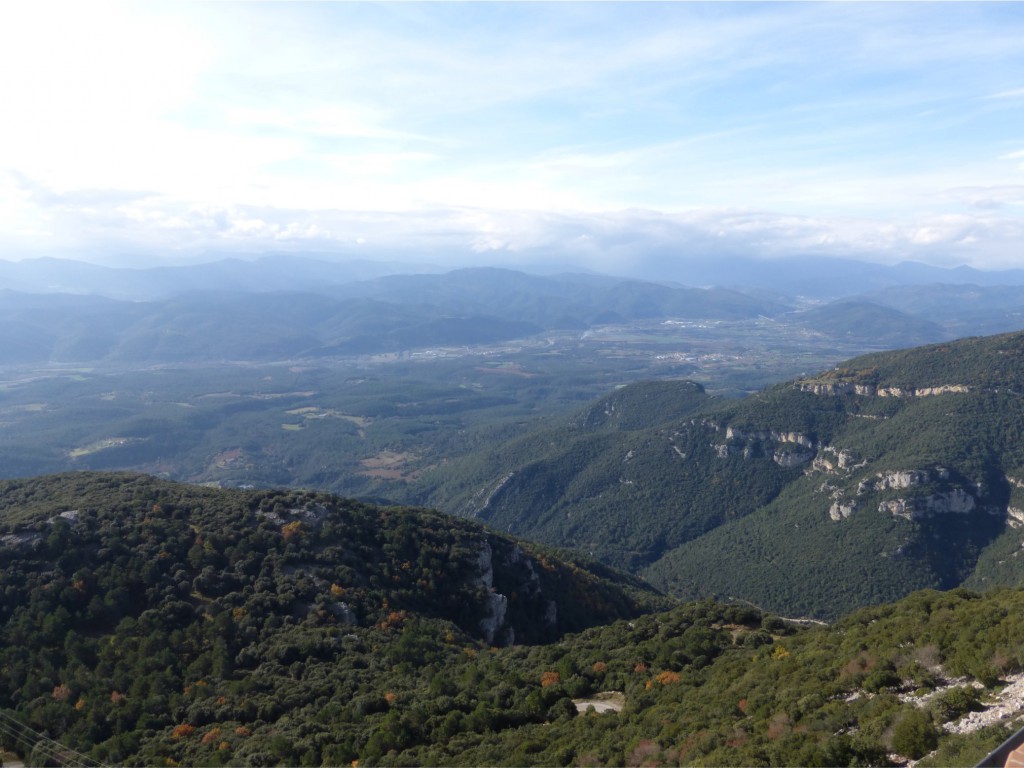
Fig. 16. Catalonia is the birthplace of the Creation Tapestry. It is not known who had made the Creation Tapestry in the 11th century, but at that time Catalonia looked exactly the same as it does now.